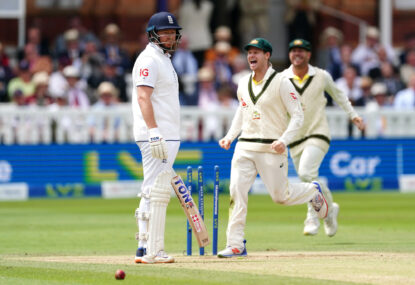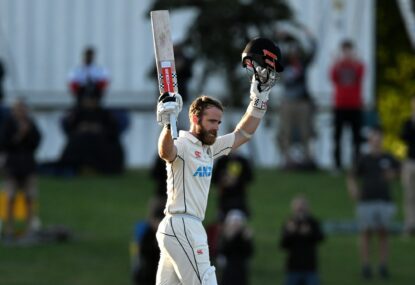
During the recent India-Australia, I watched virtually all the Tests on television. The hours of play were conveniently in Australian day-time. As the generally enthralling series made it way to the climactic last two days, with the Border-Gavaskar trophy clearly going to be lost by Australia, I became increasingly disenchanted with the television commentary team.
Like the Channel 9 commentary system, former Test players, Indian and Australian, made up the broadcasting contingent.
It’s an unfortunate fact of life that great batsmen and bowlers don’t generally make great commentators. Just as great commentators generally don’t necessarily make great batsmen and bowlers.
The skill of the player and the broadcaster are not complementary.
There are exceptions, and the obvious example is Richie Benaud, who was a working journalist during his cricket career and then studied television production at the BBC while he was a player in preparation for a career as a broadcaster.
There are a few other TV commentators who I enjoy listening too because they are able to tell us something about the conditions, tactics and flow of the game that is informed by their knowledge of the craft of the game.
Ian Chappell is one of these commentators.
But there was no Ian Chappell or Richie Benaud in India, and the television commentary was generally pathetic.
On the second-to-last day of the series, I turned on the radio and listened to the ABC cricket commentators. What a delight!
The chatter, shared expertise, insights, yarns, and good humour made compelling listening. I loved the story of the great coffee the radio commentary team was served by pleasant waiters.
One of them, on being complimented on the strong steaming brew, told Maxwell with a great grin, “Petrol, sir. Petrol for the commentators.”
Gold, too, in the telling.
It was far more informative and interesting listening to Jim Maxwell, Mike Coward, Peter Roebuck, and the others on the broadcasting team than enduring the TV commentary.
Radio has advantage over television in the broadcasting of a game like cricket because what happens is more than what see at the ground or on a television screen. Someone once said that cricket is a game of inches, “the inches between your ears.”
It is a game played with a bat and ball, and in the minds of the players, as well.
The television commentators rarely involved the viewers in this third dimension of the game. They tell us what they see and that’s about it.
The radio commentators have to “paint the picture” and then fill in the details because we have to see in our mind, not our eyes, what is happening.
There is also the power of the radio medium at work, too.
Spike Milligan said that he loved radio because you can do anything with it. He gave the example of creating a situation of a huge lava flow of hot chocolate pouring down a mountain. You can do this, paint the picture of the chocolate flow, on radio much easier than on television.
The imagination is more powerful in creating images for the mind than the eye is. Shakespeare knew this. There was no scenery on the Elizabethan stage. So in the opening of Hamlet, for instance, he creates the scene with words: “See how the dawn in russet mantle clad/Creeps over the brow of yon hill.”
Of course, radio only works if the commentators are wordsmiths. And Maxwell, Coward and Roebuck are that, and others that share the booth, including former players like Geoff Lawson and Kerry O’Keefe, are very good value, too.
The worldwide CEO of Saatchi and Saatchi, Kevin Roberts, the president of RugbyUSA as it happens, has coined the word LOVEMARKS to describe brands that have endeared themselves to customers by involving them in an emotional reaction to the product, as well as a commercial reaction.
For me, the ABC’s cricket commentary team is a Lovemark brand.
I’ll be watching the pictures of the Tests between Australia-New Zealand on Channel 9 and listening to the ABC commentary, even if it is slightly ahead of the pictures.
The pictures are the visual, but the commentary has the real story and drama, as far as I’m concerned.




































































































